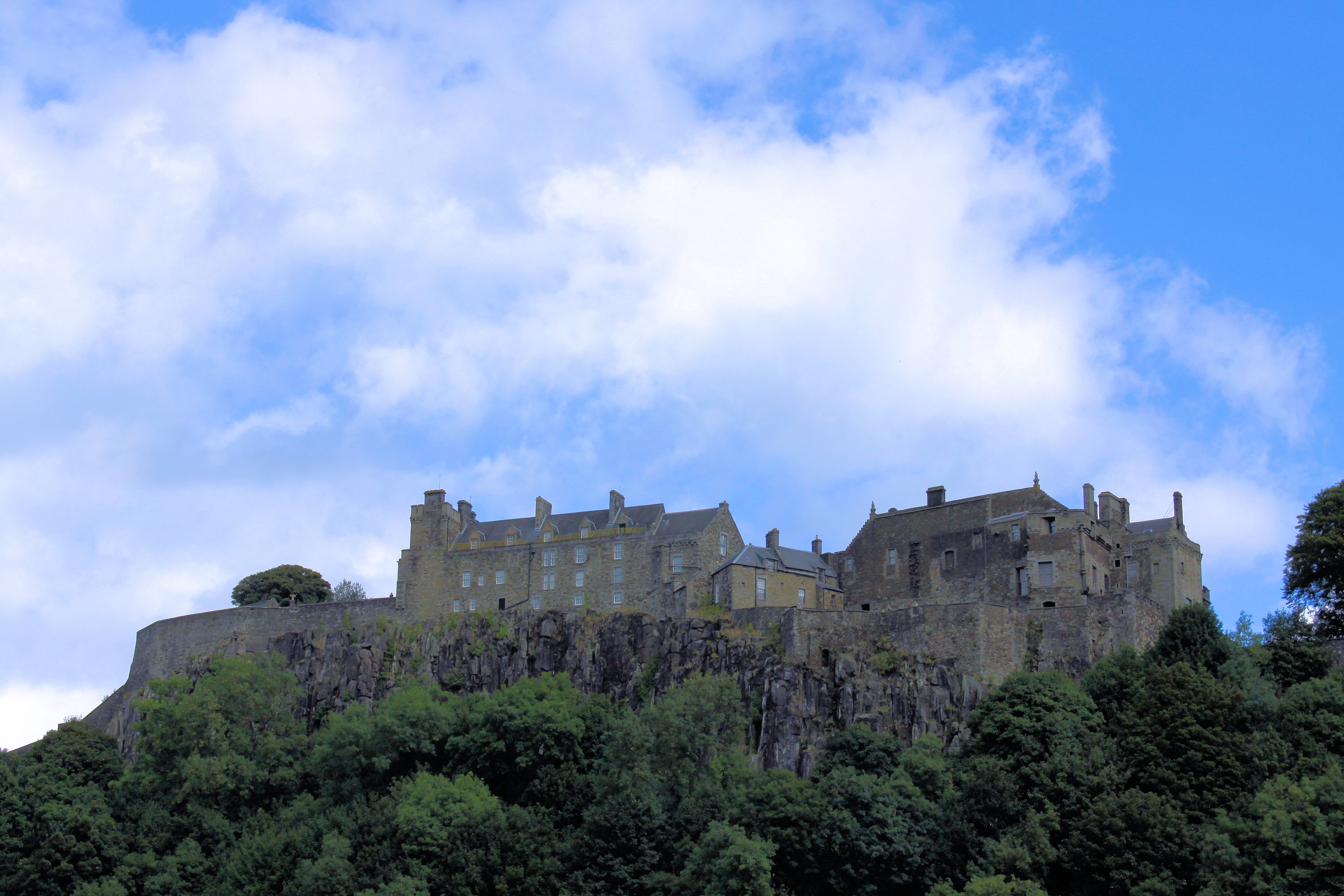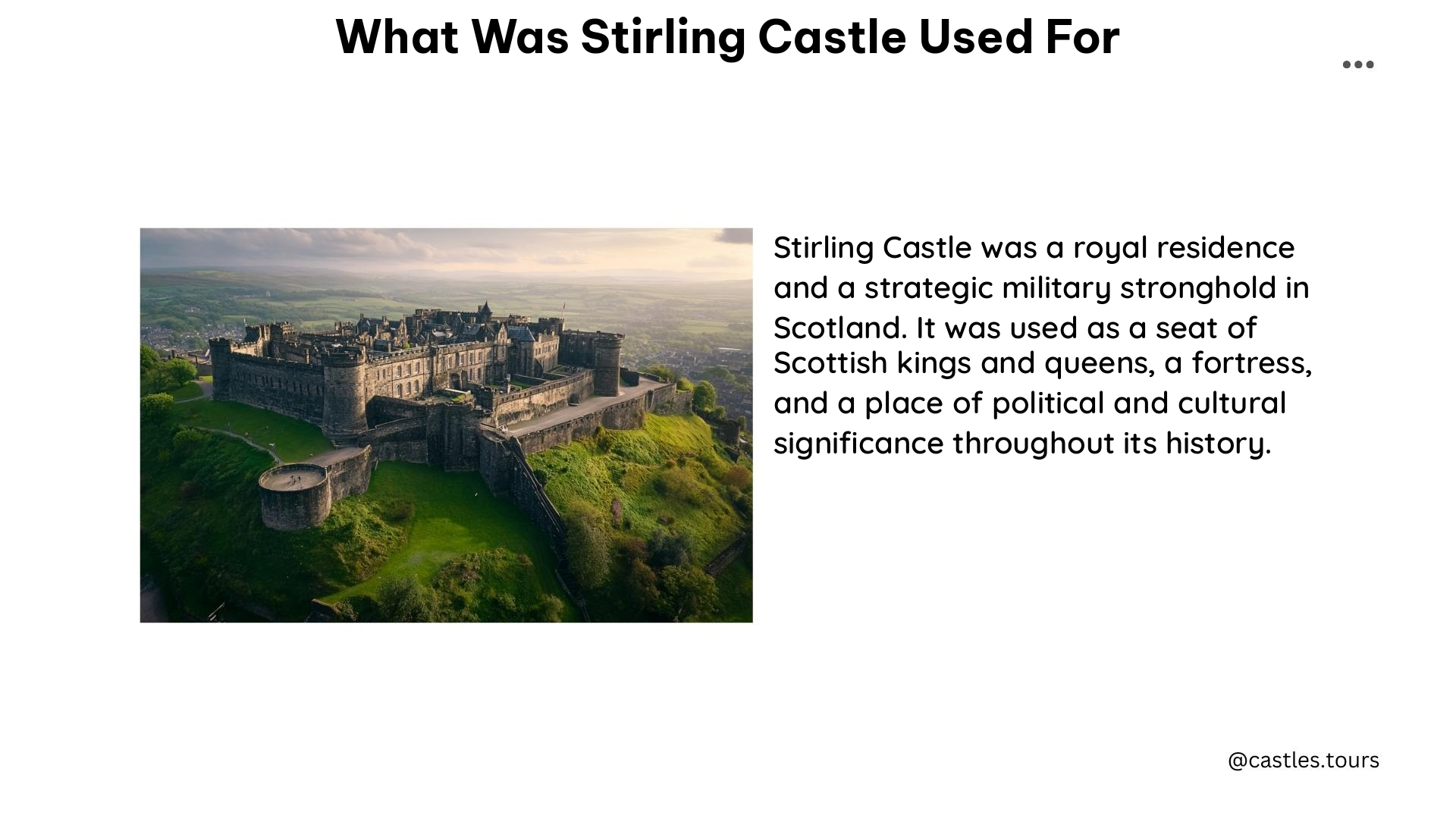Stirling Castle, located in Stirling, Scotland, has been a significant landmark in the country’s history, serving as a royal residence, military base, administrative center, and hunting grounds over the centuries. This blog post will delve into the various uses of Stirling Castle, providing a comprehensive understanding of its rich and diverse history.
Royal Residence

Stirling Castle was a principal royal residence for Scottish monarchs, particularly during the 15th and 16th centuries. It was a palace as well as a fortress, with many Scottish kings and queens being crowned, born, or dying within its walls. The castle’s strategic location and impressive architecture made it an ideal setting for royal events and ceremonies.
Military Base

The castle played a crucial role in many battles and sieges, particularly during the Wars of Scottish Independence. It was a key stronghold and military base, with its strategic location controlling the crossing of the River Forth and the surrounding routes. The castle’s fortifications and defensive capabilities made it a formidable obstacle for invading forces.
Administrative Centre
By the mid-12th century, Stirling Castle had become a key administrative center. Records show payments for the upkeep of a chapel and the construction of buildings and courtyards within the castle’s ramparts, indicating its importance as a hub of governance and bureaucracy.
Hunting Grounds
The surrounding area of Stirling Castle was used for hunting, with Alexander III of Scotland adding a hunting park to the west of the castle. This park, which is now a golf course, provided a recreational space for the Scottish royalty and nobility to pursue their passion for hunting.
Symbolic Importance
Stirling Castle has been a symbol of Scottish power and independence throughout its history. Its strategic location and role in key events have made it a crucial stronghold in the country’s history, representing the resilience and determination of the Scottish people.
Tourist Attraction
Today, Stirling Castle is a popular tourist attraction, managed by Historic Environment Scotland. Visitors can explore the castle’s various exhibits, gardens, and historical reenactments, which showcase its rich history and cultural significance.
Key Facts and Figures
| Fact | Detail |
|---|---|
| Location | Stirling Castle is situated on a volcanic crag above the River Forth in central Scotland. |
| Height | The castle stands 250 feet (75 m) higher than the surrounding terrain. |
| First Known Buildings | The first known buildings at the site date back to the late 11th century. |
| Sieges | The castle has been besieged at least eight times in its history. |
| Royal Events | The castle has witnessed the death of two kings and two coronations, including Mary Queen of Scots in 1542. |
| Restoration | The castle has undergone significant restoration, including the refurbishment of the Royal Palace and the Chapel Royal in the 1990s and 2000s. |
Stirling Castle’s rich history and diverse uses have made it a significant landmark in Scotland’s cultural and political landscape. From its time as a royal residence and military base to its current status as a popular tourist attraction, the castle continues to captivate visitors and historians alike.
References:
– BBC Travel: Stirling Castle, the Last Stronghold of Scotland
– World History Encyclopedia: Stirling Castle
– Britannica: Stirling Castle
– Historic Environment Scotland: Stirling Castle
– Wikipedia: Stirling Castle
